Hair Transplantation Turkey
Ana sayfa » Blog » Hair Transplant » Hair Transplantation TurkeyIf you’re considering hair transplantation, Turkey is a popular destination for affordable and high-quality treatment. In this article, we’ll explore why Hair Transplantation Turkey is a reliable and cost-effective solution for your hair loss problems.
Hair transplantation involves removing hair follicles from a donor site (usually the back of the head) and transplanting them into the recipient site (where hair loss has occurred). The process requires precision and expertise, which is why it’s essential to choose the right clinic and surgeon.
Turkey Hair Transplant Cost 2024
It’s important to note that while hair transplantation in Turkey is cheaper than in other countries, the quality of treatment and expertise of the surgeons is not compromised. Many clinics in Turkey offer high-quality treatment and use advanced technology and techniques.
Procedure – Aftercare
| City | Turkey – istanbul |
| Duration | 5 – 8 Hour |
| Location | Hospital |
| Anesthesia | Local |
| Duration of stay in Istanbul | 4 Days |
| Pain and Discomfort | Partially |
| Returning to Work | 3 Days |
| First Bath | 3 Days |
| Full Recovery | 1 Month |
| Side effects | Swelling and redness |
| Exercise – Cardio | 30 Days |
| Will there be any scar? | Almost Invisible |
Hair Transplant Istanbul
- Max Grafts
- Medication, Shampoo, Lotion
- Hair band
- Assistant Interpreter
- A Class Hospital
- Private Airport Transfers (Roundtrip)
- Local VIP Transfer
- 4 Nights Hotel
Hair transplant Turkey Timeline
Airport Pickup
Welcoming our patients and placing them in their hotel.
Operation Day
Hotel / Hospital Transfer. Medical examination. Health and blood tests. Hair Transplant operation.
Washing
First hair wash. Removal of stitches. Next hair wash tutorial.
Return
Hotel / Airport Transfer by VIP vehicle
Hair Transplantation Turkey Before And After

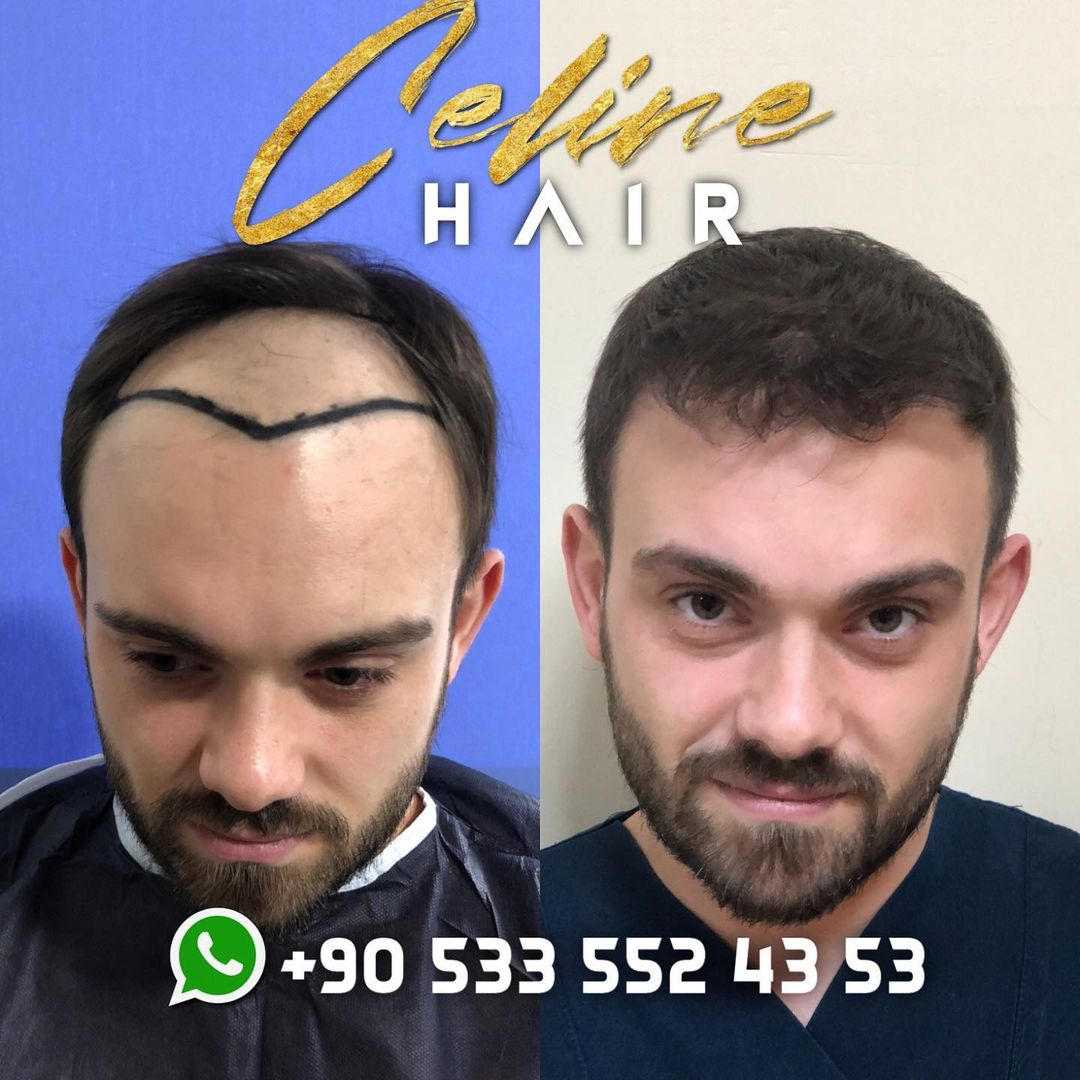
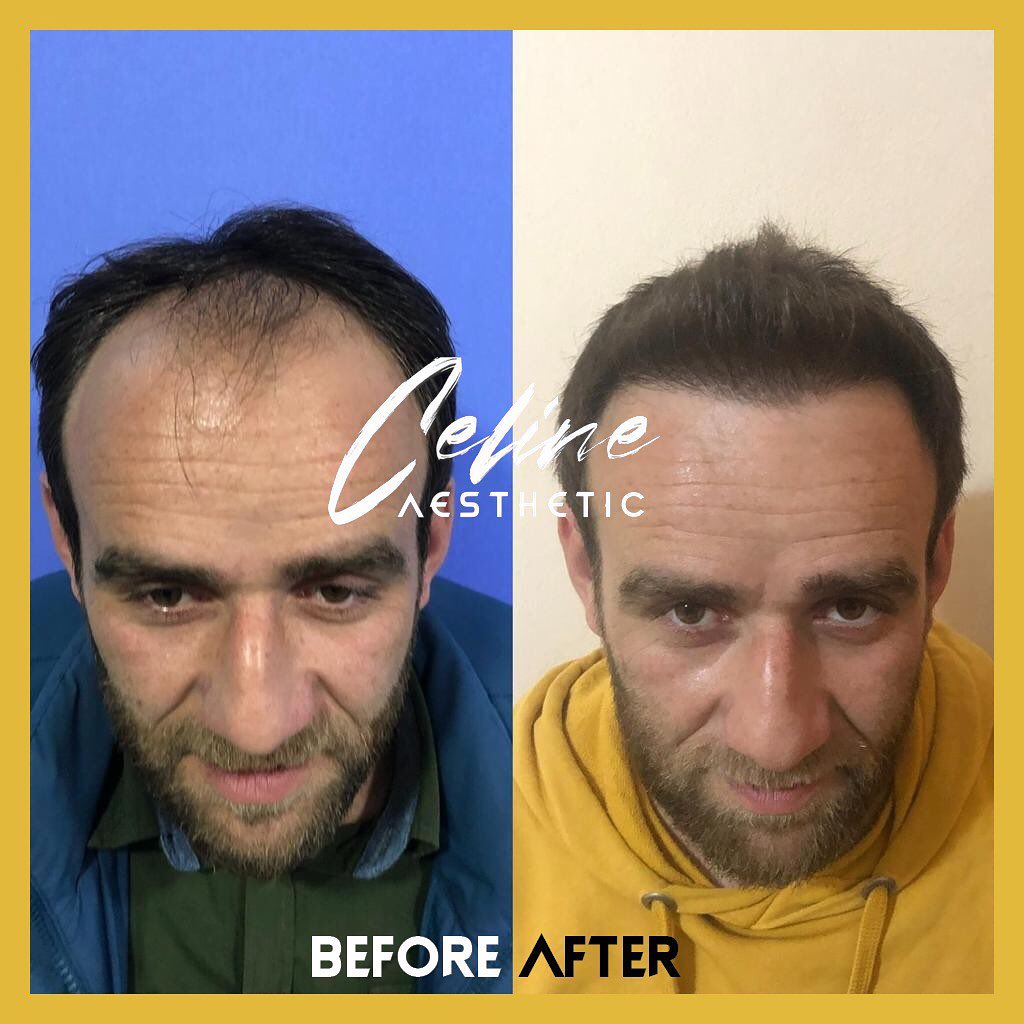
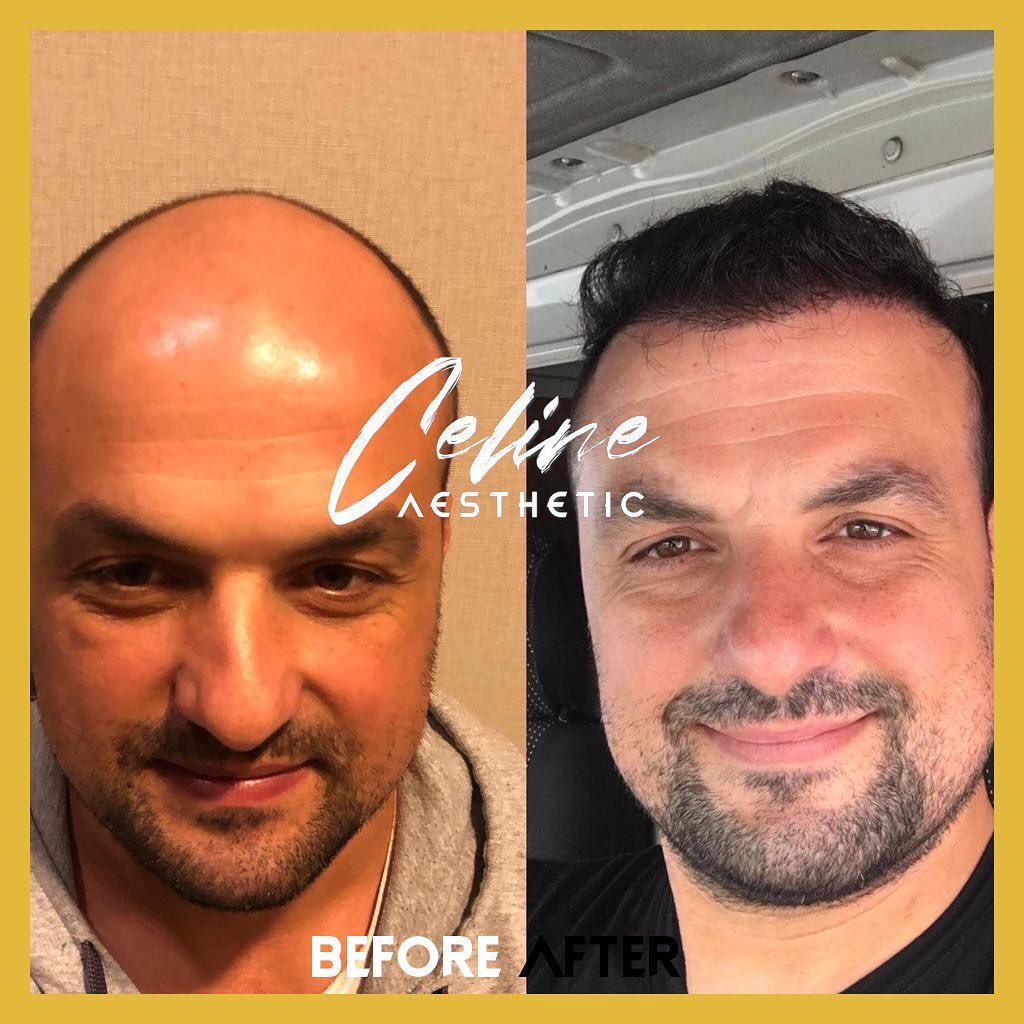
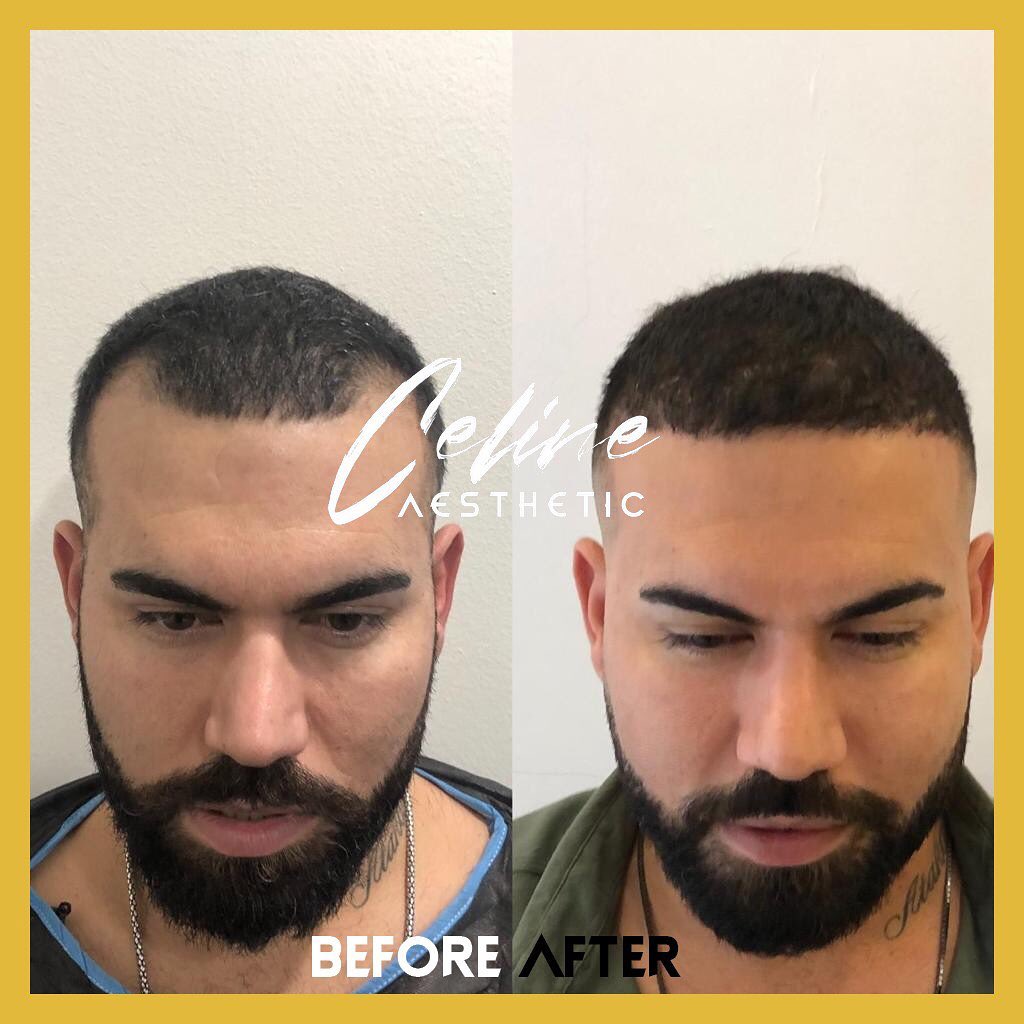
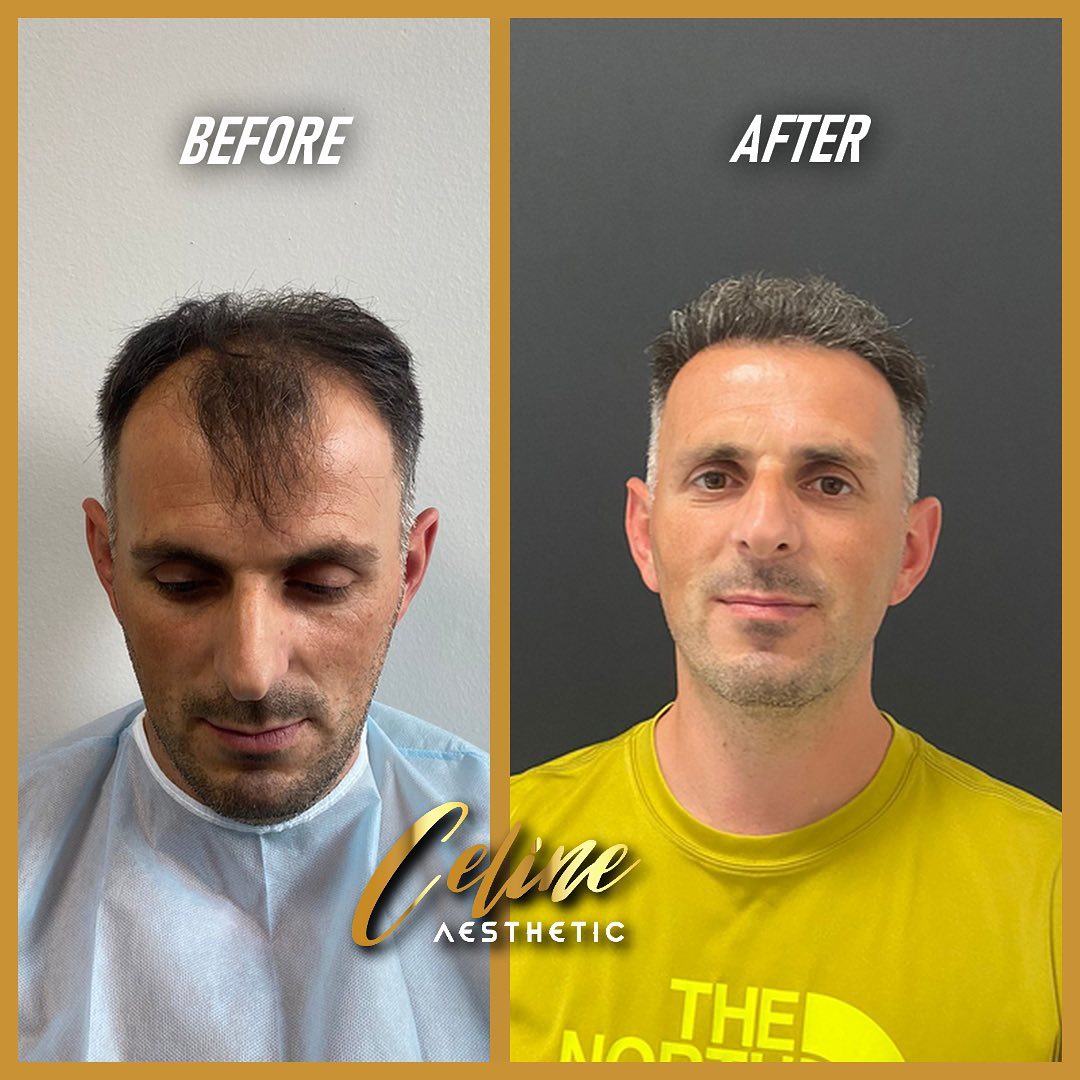
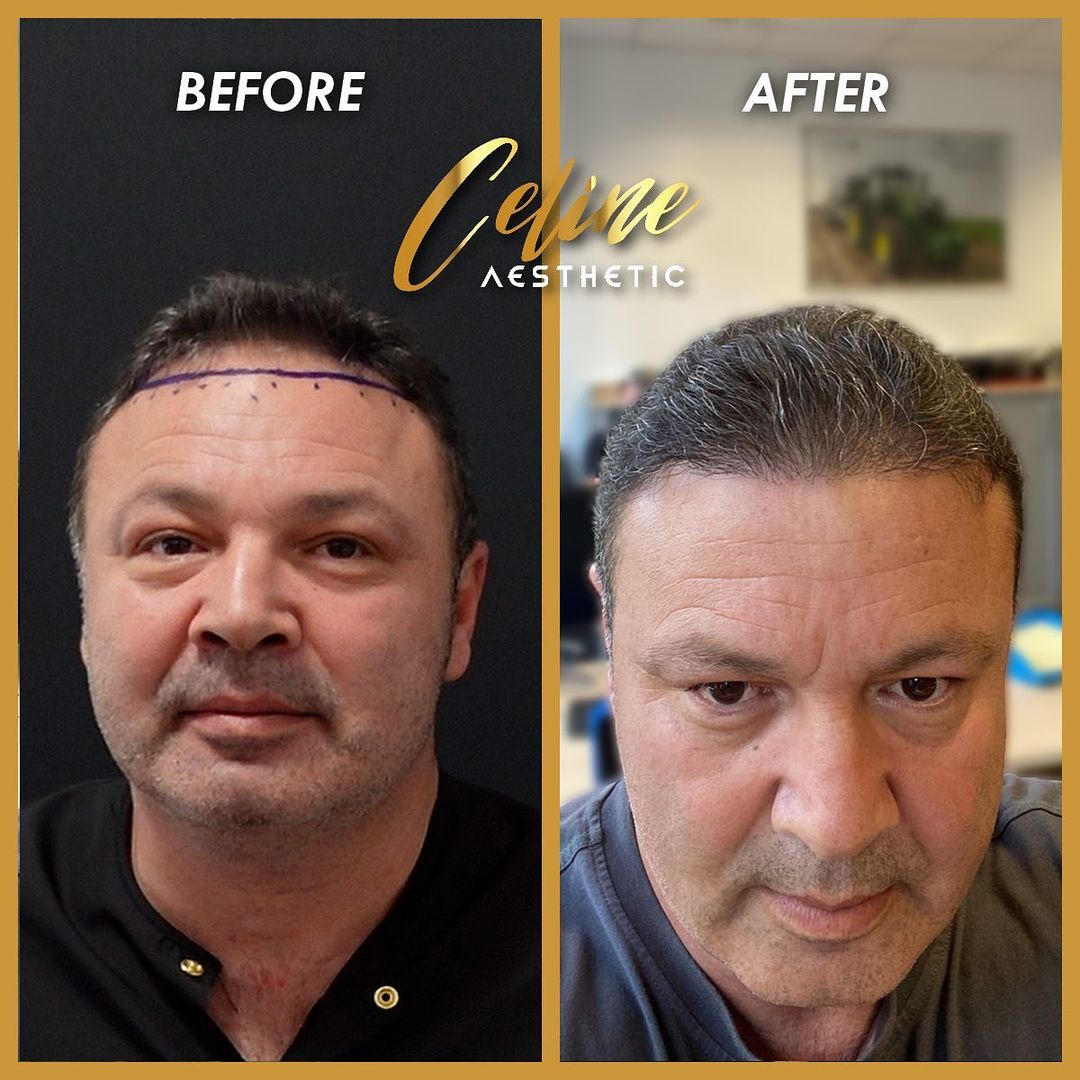
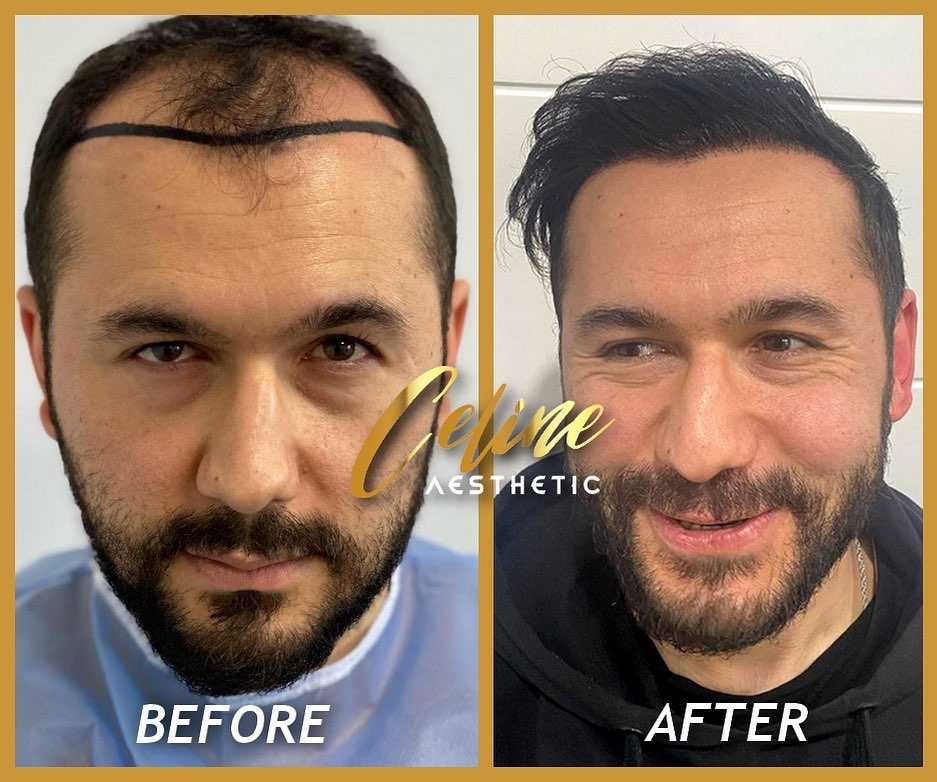
What happens 10 years after hair transplant?
Ten years after a hair transplant, various outcomes can be expected depending on factors such as the individual’s hair characteristics, the technique used for the transplant, and post-operative care. Here are some common aspects:
- Longevity of Transplanted Hair: Hair transplanted during the procedure typically comes from areas of the scalp resistant to balding. Therefore, these hairs often maintain their resistance to balding even in their new location. As a result, transplanted hair can continue to grow for many years.
- Natural Aging Process: Like the rest of the hair on your scalp, transplanted hair will age. This could mean some thinning or changes in texture over time.
- Original Hair Loss Continues: The transplant does not stop the process of hair loss in non-transplanted areas. Over the years, if the original hair continues to thin or recede, it may create a contrast with the transplanted area. This could necessitate additional procedures to maintain a natural appearance.
- Style and Appearance: The transplanted hair can generally be treated like normal hair – it can be cut, styled, and will grow normally. However, as with your other hair, it may gray over time.
- Post-Transplant Care: The longevity of the results can also depend on how the scalp and hair are cared for post-transplant. A healthy lifestyle, proper hair care, and sometimes medications to prevent further hair loss can contribute to the lasting effectiveness of the transplant.
- Surgical Advances: If the transplant was done a decade ago, it’s worth noting that techniques and technologies in hair transplantation may have evolved since then, potentially offering improved results for those considering additional procedures.
Individual experiences vary, and it’s always best to consult with a hair transplant specialist for personalized advice and expectations, especially as one’s hair loss pattern and hair characteristics change over time.
What is hair transplant surgery?
Hair transplant surgery is a cosmetic procedure that involves transferring hair from a donor area (usually the back or sides of the scalp where hair is more abundant) to a recipient area (usually the top or front of the scalp where hair is thinning or balding). The hair follicles are removed from the donor area using a surgical tool and then implanted into tiny incisions made in the recipient area. The transplanted hair follicles will continue to grow hair in their new location, resulting in a fuller, thicker head of hair. There are different types of hair transplant techniques, including follicular unit transplantation (FUT) and follicular unit extraction (FUE), and the choice of technique depends on various factors such as the extent of hair loss, the quality of donor hair, and the patient’s preferences. Hair transplant surgery is typically performed under local anesthesia and is considered a safe and effective treatment for hair loss.
Preparing for Hair Transplantation Surgery
Preparing for hair transplantation surgery involves several important steps to ensure a successful procedure and optimal results.
- Consultation with a Hair Transplant Surgeon: The first step is to schedule a consultation with a qualified and experienced hair transplant surgeon. During this consultation, the surgeon will evaluate your hair loss and determine if you are a good candidate for the procedure. They will also discuss the different options and techniques available, and help you make an informed decision based on your individual needs and goals.
- Medical Evaluation: Before the surgery, you will undergo a medical evaluation to ensure that you are in good overall health and that there are no underlying medical conditions that could affect the procedure or the healing process.
- Medication Review: You will need to inform the surgeon of any medications you are currently taking, including prescription medications, over-the-counter medications, and supplements. Certain medications may need to be stopped before the procedure, as they can increase the risk of bleeding or interfere with the healing process.
- Pre-Operative Instructions: The surgeon will provide you with specific pre-operative instructions, including what to eat and drink before the procedure, and when to stop eating and drinking. It is important to follow these instructions carefully to ensure a successful procedure.
- Arrange Transportation: Hair transplantation is a surgical procedure that involves the use of anesthesia. You will need to arrange for someone to drive you home after the procedure, as you will not be able to drive yourself.
- Plan for Recovery: You will need to plan for the recovery period after the procedure, which may involve taking time off work or other activities. You may also need to avoid certain activities, such as strenuous exercise or swimming, for a period of time after the procedure.
By following these steps, you can ensure that you are well-prepared for hair transplantation surgery and that you achieve optimal results.
What does hair transplant surgery involve?
Hair transplant surgery involves the transfer of hair follicles from a donor area to a recipient area on the scalp. The procedure is typically performed on an outpatient basis and can take several hours to complete, depending on the extent of the hair loss and the number of hair follicles to be transplanted.
The hair transplant surgery begins with the administration of local anesthesia to numb the scalp. The surgeon then extracts hair follicles from the donor area using a surgical tool. The donor area is typically located at the back or sides of the scalp, where hair is more abundant and less prone to balding. The extracted hair follicles are then prepared for transplantation.
Next, the surgeon creates tiny incisions in the recipient area on the scalp, where hair is thinning or balding. The hair follicles are then carefully implanted into the incisions in the recipient area. The surgeon will place the hair follicles at the correct angle and direction to ensure a natural-looking result.
After the surgery, patients may experience some swelling, redness, and scabbing in the recipient area. They may also feel some discomfort, but this can be managed with pain medication. Patients are typically able to return to work and normal activities within a few days of the surgery, but they should avoid strenuous exercise or activities that may cause sweating for a few weeks.
The transplanted hair follicles may initially shed hair within a few weeks after the surgery, but this is normal and expected. The new hair will start to grow within a few months and will continue to thicken and improve in appearance over the following months.
Post-operative care and recovery
Post-operative care and recovery refer to the steps taken by patients after undergoing surgery to ensure a smooth and successful recovery process. This process typically involves a combination of medical care, rest, and rehabilitation, and may vary depending on the type of surgery performed, the patient’s overall health, and the surgeon’s recommendations.
Some common post-operative care steps include:
- Follow the instructions of your surgeon and healthcare team: This includes taking medication as prescribed, attending follow-up appointments, and following any instructions related to wound care or physical activity.
- Rest and allow your body to heal: Depending on the type of surgery, you may need to limit physical activity for a certain period of time. This could involve taking time off work or avoiding certain activities like heavy lifting or intense exercise.
- Proper wound care: Depending on the type of surgery, you may have incisions or wounds that require regular cleaning and dressing changes. It is important to follow your surgeon’s instructions for wound care to prevent infection and promote healing.
- Manage pain and discomfort: It is normal to experience some pain or discomfort after surgery, but it is important to manage this appropriately. This may involve taking medication as prescribed, using ice packs or heat therapy, or engaging in relaxation techniques.
- Gradually resume normal activities: As you recover, you may gradually resume normal activities like walking, driving, and working. It is important to listen to your body and not push yourself too hard, as this could slow down the healing process.
- Follow a healthy diet: Eating a healthy diet can help support the healing process and prevent complications. Your surgeon or a dietitian may provide specific dietary recommendations based on your individual needs and the type of surgery performed.
- Stay hydrated: Drinking plenty of fluids is important after surgery to prevent dehydration and help the body flush out toxins. However, some types of surgery may require you to restrict your fluid intake temporarily, so it is important to follow your surgeon’s instructions.
- Avoid smoking and alcohol: Smoking and alcohol can slow down the healing process and increase the risk of complications. It is important to avoid these substances after surgery, at least until your healthcare provider gives you the green light.
- Attend follow-up appointments: Your healthcare provider may schedule several follow-up appointments to monitor your recovery and ensure that you are healing properly. These appointments are an opportunity to ask questions, discuss any concerns, and receive any necessary medical care.
- Seek help if you experience any complications: Despite following all the necessary steps for post-operative care, complications can still arise. If you experience any unusual symptoms or complications, such as fever, redness or swelling at the incision site, or difficulty breathing, it is important to seek medical attention immediately.
- Engage in physical therapy or rehabilitation: Depending on the type of surgery performed, you may need to participate in physical therapy or rehabilitation to regain strength, mobility, and function. It is important to attend all scheduled sessions and follow your therapist’s instructions to achieve the best possible outcome.
- Get enough rest and sleep: Rest and sleep are crucial for the body to heal and recover after surgery. It is important to get enough rest and sleep, and avoid activities that may disrupt your sleep, such as consuming caffeine or using electronic devices before bedtime.
- Manage stress and anxiety: Surgery and recovery can be stressful and anxiety-provoking. It is important to manage stress and anxiety through relaxation techniques, such as deep breathing exercises, meditation, or mindfulness practices.
- Communicate with your healthcare team: If you have any questions, concerns, or changes in your condition, it is important to communicate with your healthcare team. They can provide guidance and support throughout the recovery process.
- Stay positive and optimistic: A positive attitude can help improve your outlook and aid in the recovery process. Try to focus on the progress you are making and celebrate small successes along the way.
Why have a hair transplant?
People choose to have a hair transplant for a variety of reasons, the most common of which is to address hair loss or balding. Hair loss can be caused by many factors, including genetics, aging, hormonal changes, medical conditions, and certain medications. Hair transplant surgery offers a long-lasting solution for hair loss by transplanting hair follicles from a donor area to the recipient area on the scalp. The transplanted hair will continue to grow in the new location, resulting in a fuller, thicker head of hair.
In addition to addressing hair loss, some people may choose to have a hair transplant for cosmetic reasons, such as to improve the appearance of scars or to create a more defined hairline. Hair transplant surgery can also be used to thicken eyebrows, beard hair, or other areas of the body where hair growth is desired.
Hair transplant surgery is a safe and effective treatment for hair loss, and it can provide long-lasting results. However, it may not be suitable for everyone, and candidates should have enough healthy hair follicles in the donor area to achieve the desired results. Patients should also have a realistic expectation of the results of the surgery, as hair transplant surgery may not completely restore a full head of hair. It is important to consult with a qualified and experienced hair transplant surgeon to determine if the procedure is right for you.
Types of Hair Transplantation Procedures
There are several types of hair transplantation procedures available, each with its own unique advantages and disadvantages. Here are some of the most common types:
- Follicular Unit Transplantation (FUT): Also known as strip harvesting, this technique involves removing a strip of scalp from the donor area and then dissecting it into individual follicular units for transplantation into the recipient area. This technique can yield a large number of grafts in a single session, but it can also leave a linear scar at the donor site.
- Follicular Unit Extraction (FUE): This technique involves extracting individual hair follicles from the donor area using a small, punch-like instrument. The extracted follicles are then transplanted into the recipient area. This technique does not involve a linear incision and leaves tiny, round scars that are less noticeable than those resulting from FUT. FUE can be a good option for those who prefer shorter hairstyles.
- Direct Hair Implantation (DHI): This technique is a variation of FUE, in which the extracted follicles are implanted directly into the recipient area using a specialized implantation tool. This technique can minimize trauma to the follicles and can result in faster healing times.
- Robotic Hair Transplantation: This is a newer technique that involves using a robotic system to extract hair follicles from the donor area. The system uses advanced imaging technology to identify and extract individual follicles, which are then transplanted into the recipient area.
- Scalp Reduction: This technique involves removing a portion of the bald scalp and then stretching the surrounding hair-bearing scalp to cover the area. This technique can be effective in certain cases, but it can also result in a visible scar and may not be appropriate for everyone.
- Scalp Flaps: This technique involves moving a portion of hair-bearing scalp from one area of the head to another. This technique can yield good results, but it is a more invasive procedure that requires a longer recovery time.
- Stem Cell Hair Transplantation: This technique involves using stem cells to promote hair growth and regeneration. Stem cells can be harvested from the patient’s own body or from a donor. This technique is still in the early stages of development and is not yet widely available.
The choice of technique will depend on several factors, including the extent of hair loss, the patient’s hair type and density, and the patient’s individual preferences. It is important to consult with a qualified hair transplant surgeon to determine which technique is best suited for your individual needs.
Who is the ideal candidate for hair transplantation?
The ideal candidate for hair transplantation is someone who has experienced significant hair loss or thinning, and has enough healthy hair follicles on the back or sides of the scalp to serve as donor areas for transplantation. It is important that the individual has realistic expectations and understands that the results of the procedure may not be immediate and will require time for the transplanted hair to grow and blend in with the existing hair. They should also be in good overall health, and not have any underlying medical conditions that could interfere with the procedure or the healing process. It is best to consult with a qualified hair transplant surgeon to determine if you are a good candidate for the procedure.
In addition to the factors mentioned above, the ideal candidate for hair transplantation should have a stable pattern of hair loss. This means that their hair loss has stabilized and they are not likely to experience significant additional hair loss in the future. Hair transplantation is a surgical procedure and requires a certain level of commitment from the patient. They must be willing to follow the post-operative instructions provided by the surgeon, including avoiding certain activities and medications, and taking care of the transplanted area as it heals.
It is also important that the candidate has a realistic understanding of what hair transplantation can and cannot achieve. While hair transplantation can effectively restore hair in areas where it has been lost, it cannot create new hair follicles where they do not exist. The candidate should understand that hair transplantation may not result in a full head of hair, but rather a natural-looking and aesthetically pleasing hairline and density.
Ultimately, the decision to undergo hair transplantation should be made in consultation with a qualified and experienced hair transplant surgeon. The surgeon can evaluate the candidate’s individual needs and goals, and determine if hair transplantation is the appropriate treatment option for them.
Hair transplantation results and outcomes
Hair transplantation is a surgical procedure that involves transplanting hair follicles from one area of the scalp, typically the back of the head, to an area where hair has thinned or been lost. The results and outcomes of hair transplantation can vary depending on a number of factors, including the type of procedure, the skill of the surgeon, and the patient’s individual characteristics.
Some common outcomes and results of hair transplantation include:
- Natural-looking hair: With the latest techniques in hair transplantation, it is possible to achieve a natural-looking hairline and overall appearance. Skilled surgeons use a variety of techniques, such as follicular unit extraction (FUE) and follicular unit transplantation (FUT), to create a natural-looking and aesthetically pleasing result.
- Improved self-esteem: For many people, hair loss can have a significant impact on their self-esteem and overall quality of life. Hair transplantation can help restore a fuller head of hair and improve self-confidence.
- Permanent results: Hair transplantation typically results in permanent hair growth in the transplanted area. The transplanted hair follicles are genetically resistant to hair loss, meaning they will continue to grow even after being transplanted to a new area.
- Gradual improvement: While the results of hair transplantation can be noticeable immediately after the procedure, it typically takes several months for the transplanted hair to fully grow in. Patients may notice gradual improvements in the appearance of their hair over time.
- Minimal scarring: With the latest techniques in hair transplantation, scarring is typically minimal and can be easily concealed by the surrounding hair. FUE, in particular, is a minimally invasive technique that involves harvesting individual hair follicles, leaving minimal scarring in the donor area.
- Possible side effects: Like any surgical procedure, hair transplantation carries a risk of potential side effects. These may include bleeding, infection, scarring, or numbness in the scalp. However, these side effects are typically minor and temporary.
Overall, hair transplantation can be an effective and permanent solution for hair loss. By working with a skilled and experienced surgeon, patients can achieve natural-looking results and improve their self-confidence and overall quality of life.
What are the differences between FUE and FUT hair transplants?
FUE (Follicular Unit Extraction) involves extracting individual hair follicles from the donor area using a small, punch-like instrument. The extracted follicles are then transplanted into the recipient area. FUE does not involve a linear incision and leaves tiny, round scars that are less noticeable than those resulting from FUT. This technique is often preferred for those who prefer shorter hairstyles, as the scars are less visible.
FUT (Follicular Unit Transplantation), also known as strip harvesting, involves removing a strip of scalp from the donor area, usually the back of the head, and then dissecting the strip into individual follicular units for transplantation into the recipient area. FUT allows for the transplantation of a larger number of hair follicles in a single session, making it more efficient for those who require extensive hair restoration.
The main difference between the two techniques is the method of harvesting the donor hair follicles. FUE involves individual follicular extraction, while FUT involves removing a strip of scalp. FUE has a quicker recovery time, but FUT may be more efficient for those who require a large number of hair follicles to be transplanted.
The choice of technique may depend on several factors, including the extent of hair loss, the patient’s hair type and density, and the patient’s individual preferences. It is important to consult with a qualified hair transplant surgeon to determine which technique is best suited for your individual needs.
Risks of Hair Transplantation
Like any surgical procedure, hair transplantation carries some risks and potential complications. Here are some of the most common risks associated with hair transplantation:
- Infection: Any surgical procedure carries a risk of infection, and hair transplantation is no exception. Patients should take care to keep the transplanted area clean and follow post-operative instructions carefully to minimize the risk of infection.
- Bleeding: Hair transplantation involves making incisions in the scalp, which can result in bleeding. In some cases, bleeding may be excessive and require medical attention.
- Scarring: While newer techniques like FUE leave minimal scarring, FUT can leave a linear scar at the donor site. Patients should discuss the risk of scarring with their surgeon and carefully consider which technique is best for their individual needs.
- Pain and Discomfort: Hair transplantation can be a painful procedure, and patients may experience discomfort during the procedure and during the recovery period. Pain and discomfort can usually be managed with over-the-counter pain relievers or prescription medications prescribed by the surgeon.
- Swelling: Swelling is a common side effect of hair transplantation and can occur in both the donor and recipient areas. The swelling usually subsides within a few days to a week after the procedure.
- Poor Results: While hair transplantation can be effective in restoring hair in areas where it has been lost or thinned, there is a risk of poor results or uneven growth. Patients should have realistic expectations and discuss their individual goals with their surgeon before the procedure.
- Shock Loss: Shock loss is a temporary loss of hair in the donor or recipient area, which can occur after hair transplantation. It is usually a temporary side effect and the hair should regrow within a few months.
- Nerve Damage: Hair transplantation can result in nerve damage, which can cause numbness or tingling in the donor or recipient area. This is a rare complication, but it can be permanent in some cases.
- Cysts: In some cases, hair transplantation can result in the development of small cysts at the site of the transplanted hair follicles. These cysts are usually benign and can be treated with medication or removed surgically if necessary.
- Allergic Reactions: Some patients may experience an allergic reaction to anesthesia or other medications used during the procedure. It is important to inform the surgeon of any allergies before the procedure.
- Keloid Scarring: In some cases, hair transplantation can result in the development of keloid scars, which are thick, raised scars that can be difficult to treat.
Hair transplantation maintenance and aftercare
After undergoing hair transplantation, it is important to follow proper maintenance and aftercare to ensure a successful recovery and optimal results. Proper maintenance and aftercare can also help minimize the risk of complications and promote healthy hair growth.
Here are some common steps for hair transplantation maintenance and aftercare:
- Follow your surgeon’s instructions: Your surgeon will provide specific instructions on how to care for your scalp and hair after transplantation. It is important to follow these instructions closely to ensure optimal results and minimize the risk of complications.
- Avoid strenuous activities: For the first few days after transplantation, it is important to avoid strenuous activities that may cause sweating or increase blood flow to the scalp. This may include exercise, heavy lifting, or bending over.
- Keep the scalp clean: It is important to keep the scalp clean after transplantation to prevent infection and promote healthy hair growth. Your surgeon may provide specific instructions on how to clean your scalp and what products to use.
- Avoid alcohol and smoking: Smoking and alcohol can interfere with the healing process and decrease blood flow to the scalp. It is important to avoid these substances after transplantation.
- Avoid touching or scratching the scalp: It is important to avoid touching or scratching the scalp after transplantation, as this can disrupt the healing process and damage newly transplanted hair follicles.
- Protect the scalp from the sun: After transplantation, it is important to protect the scalp from the sun to prevent sunburn and promote healthy hair growth. This may include wearing a hat or using sunscreen.
- Attend follow-up appointments: Your surgeon may schedule several follow-up appointments to monitor your recovery and ensure that you are healing properly. These appointments are an opportunity to ask questions, discuss any concerns, and receive any necessary medical care.
- Be patient: Hair transplantation typically results in gradual hair growth, with full results visible several months after the procedure. It is important to be patient and follow the recommended aftercare to ensure the best possible outcome.
Overall, proper maintenance and aftercare are crucial for a successful hair transplantation outcome. By following your surgeon’s instructions, avoiding strenuous activities, and practicing good scalp hygiene, you can help promote healthy hair growth and minimize the risk of complications.
Shaving After Hair Transplantation
Shaving after hair transplantation can be a concern for many patients. After undergoing hair transplantation, the scalp may be tender and sensitive, and shaving may cause discomfort or damage to newly transplanted hair follicles. However, there are certain guidelines that can help patients safely shave their scalp after hair transplantation.
Here are some tips for shaving after hair transplantation:
- Wait for your surgeon’s approval: Before shaving your scalp after hair transplantation, it is important to wait for your surgeon’s approval. Your surgeon will provide specific instructions on when it is safe to shave your scalp and what precautions to take.
- Use a gentle razor: When shaving your scalp after hair transplantation, it is important to use a gentle razor that will not cause irritation or damage to the newly transplanted hair follicles. Electric razors or disposable razors with a single blade are often recommended.
- Shave in the direction of hair growth: When shaving your scalp after hair transplantation, it is important to shave in the direction of hair growth. Shaving against the grain can cause irritation or damage to the hair follicles.
- Be gentle: After hair transplantation, the scalp may be tender and sensitive. When shaving, it is important to be gentle and avoid applying too much pressure to the scalp.
- Moisturize: After shaving, it is important to moisturize the scalp to prevent dryness and irritation. Your surgeon may recommend a specific moisturizer to use after shaving.
- Avoid shaving cream: Some shaving creams contain chemicals that can be irritating to the scalp after hair transplantation. It is often recommended to avoid using shaving cream and instead use a mild soap or shampoo.
Hair bank and donor dominance
When you look at a man without hair, you can see that he has hair on the side of the head and the area that is close to the neck. We call this area hair bank. Because the transfers to the area where there is no hair are made from these regions. The reason for this is that the hair follicles in that area do not shed to a large extent. What can we say; This is the secret of God!!!
The width, thickness, and density of these hair follicles, which will almost never be lost, are called donor dominance. Although they are not of the same quality in every person, there are usually sufficient amount of donors for transplantation.
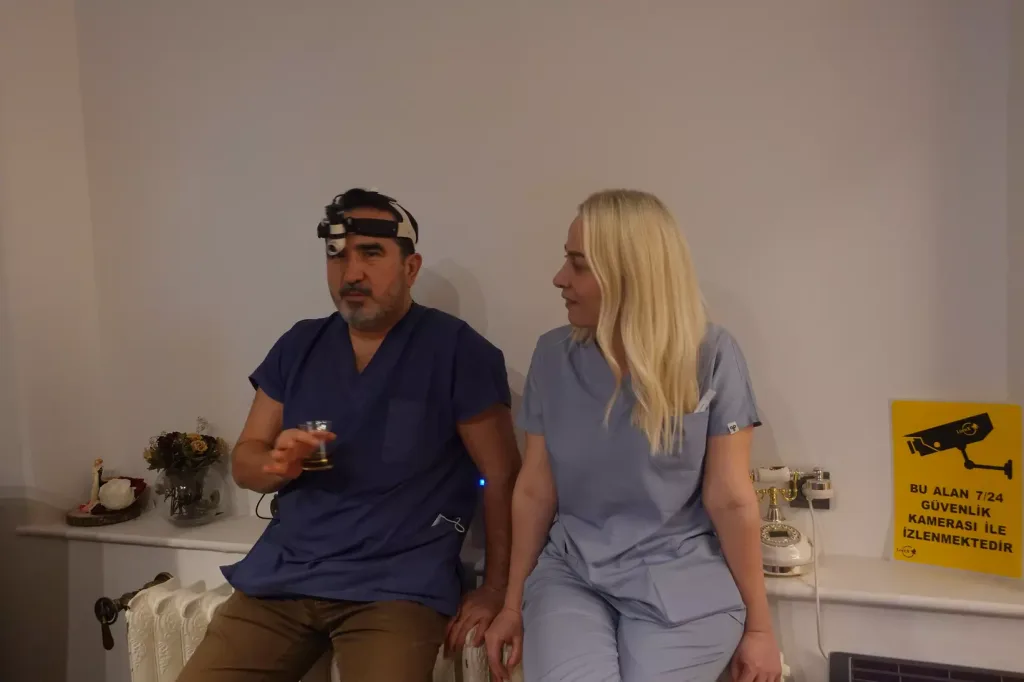
What is the secret of success in hair transplant
Basically, there are two points that we pay attention to in hair transplantation and in which the efficiency is improved with technology. The first one is to transfer the hair to the area where there is no hair by collecting them one by one using a micromotor. The second one is the directional separation of the collected hair follicles using a stereoscopic microscope. This is important
because having hair with a natural appearance of that no one notices after 6 to 7 months depends on the direction it is separated and transplanted. After all, no one wants hair, each facing a different direction.
Stereoscopic Microscope in Hair Transplant
It can be called the greatest innovation in hair transplantation. It is an essential technology to give a natural appearance to the hair and to achieve maximal efficiency from the transplanted roots. Many physicians do this with the naked eye or using mini microscopes. This increases the transection of and damage to the hair.
You may be interested in: Penis Enlargement Turkey
Advantages of having a hair transplant in Turkey
- Prices are cheaper compared to Europe and America.
- Opportunity to visit historical places of Istanbul.
- A+ Workmanship, quality result.
- Doctor’s assurance
- All inclusive hair transplant packages
- Advantage of Fue Gold hair transplantation technique.
Limitations of Hair Transplantation
Hair transplantation is a surgical procedure that involves moving hair follicles from one part of the body (usually the back or sides of the head) to another part where hair is thinning or balding. While hair transplantation can be an effective solution for hair loss, there are several limitations that should be considered:
- Limited Donor Area: The success of hair transplantation depends on the availability of healthy hair follicles in the donor area. If the donor area is limited or already depleted, the amount of hair that can be transplanted may be insufficient to achieve the desired result.
- Not Suitable for Everyone: Hair transplantation is not suitable for everyone, especially those who have very little or no hair left in the donor area. Additionally, people with certain medical conditions or taking certain medications may not be eligible for the procedure.
- Risk of Infection: Like any surgical procedure, hair transplantation carries a risk of infection. The risk can be minimized by choosing a qualified and experienced surgeon, and by following post-operative care instructions carefully.
- Expense: Hair transplantation can be a costly procedure, especially if multiple sessions are required to achieve the desired result. The cost varies depending on the amount of hair to be transplanted, the surgeon’s experience, and the location of the clinic.
- Post-Operative Care: Proper post-operative care is crucial for the success of hair transplantation. Patients must avoid strenuous physical activity and exposure to sunlight for a few weeks after the procedure. They must also follow a strict hair care regimen to ensure the transplanted hair follicles take root and grow properly.
- Results may vary: Hair transplantation is not a guaranteed solution for hair loss. The success of the procedure depends on several factors, including the skill and experience of the surgeon, the quality of the donor hair, and the patient’s adherence to post-operative care instructions. Additionally, the results may not be visible for several months after the procedure.
- Risk of scarring: Hair transplantation may result in scarring in the donor and recipient areas. While the scars may fade over time, they may be visible and may affect the patient’s self-esteem.
In conclusion, while hair transplantation can be an effective solution for hair loss, it is not suitable for everyone, and there are several limitations that should be considered before undergoing the procedure. Patients should discuss the risks, benefits, and limitations with a qualified surgeon before making a decision.
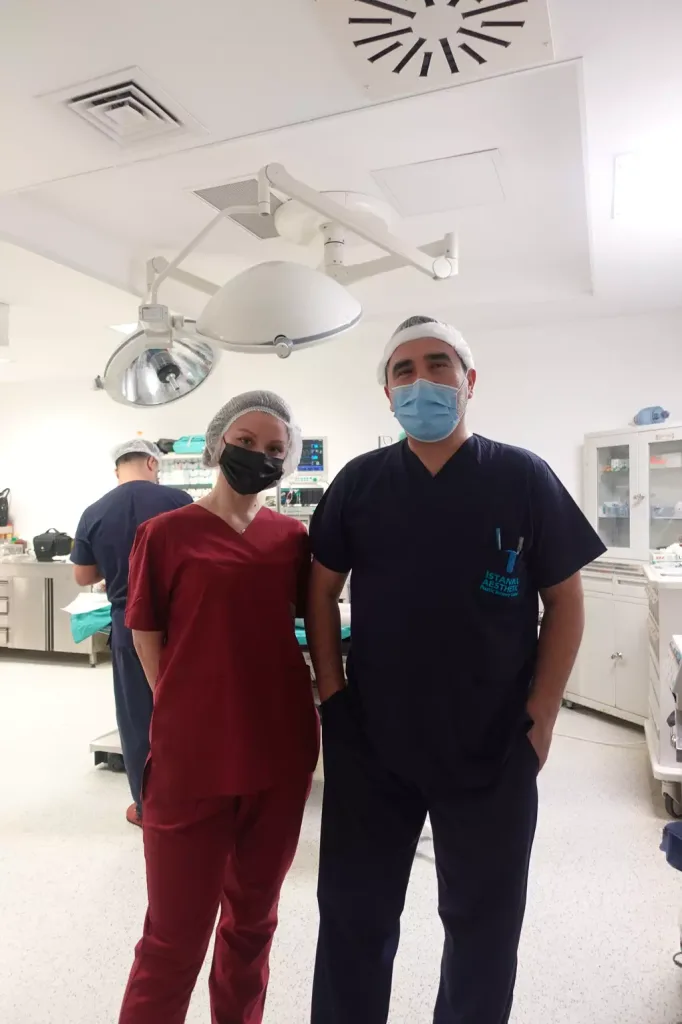
What is the goal of a well-performed hair transplantation?
There are many criteria to qualify the outcome as good. We wrote a few of the most important to you and us. These are as follows:
- Natural-looking hair and transplantation not being understood;
- Ensuring the highest growth rates of the transplanted grafts;
- Performing the hair transplantation procedure by considering the hair loss due to aging;
- Aiming minimal irritation by using Fue gold technique;
- Achieving hair transplantation without infection.
Can bad hair transplantation be corrected?
Hair transplantation performed by inexperienced or unlicensed technicians may be corrected. For this, hair transplantation procedure should be repeated. In some patients, the desired result is achieved completely, and in some patients, a better result is obtained than before.
Some of the mistakes made:
- Grafts not being transplanted correctly (Directional problems);
- Failure to equally distribute the restricted donor hair follicles collected;
- Excessive hair transplantation;
- Inability to plan the hair front line naturally.
Is there anything I should be afraid of hair transplant?
There is no risk of death. Since local anesthesia will be performed on your scalp using tiny needles, you won’t feel anything. If you are healthy and don’t have an epidemic disease, there is nothing to be afraid of. What you need to pay attention is to use the drugs prescribed after the procedure and to follow the instructions that are given by your physician.
We will wash the hair once after the hair transplant. Then we will teach you how you should wash your hair and you will repeat it at home a few times.
How long does a hair transplant take to grow?
After a hair transplant, it can take several months for the transplanted hair to start growing. Typically, new hair growth will begin within three to four months after the procedure, and full results may take up to a year or more to become noticeable.
During the first few weeks after a hair transplant, the transplanted hair follicles will enter a dormant phase and shed the existing hair shafts. This is a normal part of the process, and it can take several weeks for new hairs to begin growing from the transplanted follicles.
As the new hair follicles begin to grow, they will typically start out fine and thin, but will gradually thicken and become more visible over time. The final results of a hair transplant may vary depending on the individual’s hair growth pattern, the number of grafts used, and the skill of the surgeon performing the procedure.
It’s important to follow your surgeon’s post-operative care instructions carefully to ensure the best possible results from your hair transplant. This may include avoiding certain activities or products that could damage the transplanted hair, as well as taking medications or using topical treatments to promote healthy hair growth.
Am I a suitable candidate for hair transplantation?
Determining whether someone is a suitable candidate for hair transplantation depends on several factors. Here are some general guidelines that may help:
- Hair Loss Pattern: The pattern and extent of your hair loss will be evaluated to determine if you have enough donor hair (usually from the back and sides of your scalp) for transplantation.
- Age: Hair transplantation is generally recommended for people who are over the age of 25 when hair loss patterns have stabilized.
- Health: Your overall health will be evaluated to ensure that you can safely undergo the procedure.
- Expectations: Realistic expectations are essential to achieve successful results. You should have a clear understanding of what hair transplantation can and cannot achieve.
- Hair Quality: The quality and texture of your hair will be evaluated to ensure that the transplanted hair will blend in with your existing hair.
- Medications: Certain medications, such as blood thinners, may need to be discontinued before the procedure.
- Budget: Hair transplantation can be costly, and you should consider whether the cost of the procedure is within your budget.
Ultimately, the decision of whether you are a suitable candidate for hair transplantation should be made after a thorough evaluation by a qualified hair restoration surgeon. They will assess your individual circumstances and advise you on the best course of action for your specific needs.
Hair transplantation prices
hair transplant turkey cost ; If there is no severe baldness, the price range of the hair transplantation is more or less fixed. I can’t write the prices here as it is prohibited by the statutory law. However, if you contact us via our WhatsApp support line, my assistants can share with you the current prices and all the details about the operation.
Why choose Dr. Ali Mezdeği for your hair transplant procedure?
Dr. Ali Mezdeği is a highly qualified and experienced hair transplant surgeon who specializes in the latest techniques and technology in hair restoration. Here are some of the reasons why you may choose Dr. Ali Mezdeği for your hair transplant procedure:
- Expertise: Dr. Ali Mezdeği has extensive experience in hair restoration and has performed thousands of successful procedures. He is highly skilled in the latest techniques, including Follicular Unit Extraction (FUE), Direct Hair Implantation (DHI), and Robotic Hair Transplantation.
- Personalized Treatment: Dr. Ali Mezdeği takes a personalized approach to each patient, taking the time to understand their individual goals and concerns. He works closely with each patient to develop a customized treatment plan that will achieve the best possible results.
- State-of-the-Art Facility: Dr. Ali Mezdeği operates out of a state-of-the-art facility that is equipped with the latest technology and equipment. This ensures that each patient receives the highest level of care and the most advanced treatments available.
- Excellent Patient Care: Dr. Ali Mezdeği and his team are committed to providing excellent patient care before, during, and after the procedure. They take the time to answer questions, provide support, and ensure that each patient is comfortable and well-informed throughout the process.
- Reputation: Dr. Ali Mezdeği is highly regarded in the field of hair restoration and has earned a reputation for excellence among his patients and colleagues. He is committed to staying up-to-date with the latest advances in hair restoration and to delivering the best possible results for his patients.
Overall, if you are considering a hair transplant procedure, Dr. Ali Mezdeği is an excellent choice. With his expertise, personalized approach, state-of-the-art facility, and commitment to patient care, he can help you achieve the natural-looking, full head of hair you desire.
Hair Transplantation Clinic View vr 360°
Hair Transplantation Turkey FQAs
What Can I Expect in Terms of Follow-Up Care After Hair Transplantation?
After hair transplantation, patients will typically have several follow-up appointments with the surgeon to monitor the progress of the healing process and ensure that the hair is growing properly. The surgeon may also provide specific instructions on hair care and maintenance to ensure the best possible results.
Can I Wear a Hat After Hair Transplantation?
It’s generally safe to wear a hat after hair transplantation, but it’s important to avoid tight-fitting hats that may rub against the transplanted area. The surgeon may provide specific instructions on when it’s safe to resume wearing hats or other headwear.
How Long Does the Healing Process Take After Hair Transplantation?
The healing process after hair transplantation generally takes several weeks, during which time the transplanted hair follicles establish a blood supply and begin to grow. Patients may experience swelling, redness, and mild discomfort during this time, but these symptoms usually subside within a few days.
Can I Exercise After Hair Transplantation?
It’s important to avoid strenuous activities such as exercise for at least a week after hair transplantation to allow the scalp to heal. After this initial period, patients can gradually resume exercise and other activities as recommended by the surgeon.
How Can I Prepare for the Day of Hair Transplantation?
To prepare for the day of hair transplantation, it’s important to follow the pre-operative instructions provided by the surgeon, which may include avoiding certain medications, alcohol, and smoking in the weeks leading up to the procedure. The patient may also need to arrange for transportation to and from the clinic and wear comfortable clothing on the day of the procedure.
Can I Undergo Hair Transplantation if I Have Diabetes?
Patients with diabetes may be at increased risk of complications after hair transplantation, including delayed wound healing and infection. The surgeon will evaluate the patient’s medical history and blood sugar levels and determine if hair transplantation is a suitable option.
How Can I Ensure the Best Results from Hair Transplantation in Turkey?
To ensure the best results from hair transplantation in Turkey, it’s important to choose a reputable clinic and surgeon, follow pre and post-operative instructions, and have realistic expectations for the outcome. It’s also important to maintain a healthy lifestyle and proper hair care routine after the procedure.
Is Hair Transplantation in Turkey Covered by Insurance?
Hair transplantation in Turkey is generally not covered by insurance, as it is considered a cosmetic procedure. However, some clinics may offer financing options or payment plans to make the procedure more affordable.
Can I Travel Back Home Immediately After Hair Transplantation in Turkey?
Most patients can travel back home within a few days after hair transplantation in Turkey, as long as they follow the post-operative instructions provided by the surgeon. It’s important to avoid strenuous activities and exposure to excessive sun, wind, or dust during the initial recovery period.
Can I Get Hair Transplantation If I Have Curly Hair?
Yes, hair transplantation can be performed on patients with curly hair. However, it’s important to choose a surgeon who has experience working with curly hair and can achieve natural-looking results.
How Can I Choose the Right Clinic for Hair Transplantation in Turkey?
When choosing a clinic for hair transplantation in Turkey, it’s important to consider factors such as the clinic’s reputation, the experience of the surgeon, and the quality of the equipment and facilities. Look for a clinic with a proven track record of success and positive reviews from previous patients.
Can I Get Hair Transplantation If I Have Thin Hair?
Hair transplantation can be used to improve the density and thickness of thinning hair, depending on the extent of hair loss and the desired outcome. The surgeon will evaluate your hair loss and determine if hair transplantation is a suitable solution.
How Can I Ensure a Safe and Successful Hair Transplantation Procedure in Turkey?
To ensure a safe and successful hair transplantation procedure in Turkey, it’s important to choose a qualified and experienced surgeon, follow pre and post-operative instructions, and have realistic expectations for the outcome. It’s also important to maintain a healthy lifestyle and proper hair care routine after the procedure.
Is There a Minimum Age Requirement for Hair Transplantation in Turkey?
There is no minimum age requirement for hair transplantation in Turkey, but it’s important to consult with a qualified surgeon to determine if hair transplantation is a suitable option for younger patients.
What Are the Different Types of Hair Transplantation Techniques?
The two most commonly used hair transplantation techniques are Follicular Unit Extraction (FUE) and Follicular Unit Transplantation (FUT). FUE involves extracting individual hair follicles using a micro-punch and transplanting them into the recipient site, while FUT involves removing a strip of skin from the donor site and dissecting it into individual hair follicles.
Can I Get Hair Transplantation If I Have a Medical Condition?
The suitability of hair transplantation for patients with medical conditions depends on the type and severity of the condition. It’s important to consult with a qualified surgeon and disclose any medical conditions or medications you may be taking before undergoing the procedure.
When Can I Expect to See Results from Hair Transplantation?
The results of hair transplantation can take several months to become noticeable, as the transplanted hair follicles take time to grow and thicken. Most patients begin to see results within 3 to 6 months after the procedure, with full results visible within 12 to 18 months.
How Can I Maintain the Results of Hair Transplantation?
To maintain the results of hair transplantation, it’s important to maintain a healthy lifestyle and proper hair care routine. This may include a healthy diet, regular exercise, and using gentle hair care products that are free of harsh chemicals and irritants.
What Are the Risks Associated with Hair Transplantation?
The risks associated with hair transplantation are generally minimal and include infection, bleeding, scarring, and unnatural-looking results. These risks can be minimized by choosing a qualified and experienced surgeon, following pre and post-operative instructions, and having realistic expectations for the outcome.
How Long Do the Results of Hair Transplantation Last?
The results of hair transplantation are generally long-lasting, as the transplanted hair follicles are resistant to hair loss. However, the natural aging process and other factors such as hormonal changes or medical conditions may cause further hair loss over time.
Can I Undergo Hair Transplantation if I Have a History of Keloid Scarring?
Patients with a history of keloid scarring may be at increased risk of developing keloid scarring after hair transplantation. The surgeon will evaluate the patient’s medical history and determine if hair transplantation is a suitable option.
Can I Undergo Hair Transplantation if I Have Scarring Alopecia?
Hair transplantation may be a suitable option for some types of scarring alopecia, depending on the extent and location of the scarring. The surgeon will evaluate the patient’s condition and determine if hair transplantation is a suitable solution.
What Should I Expect During the Initial Consultation for Hair Transplantation?
During the initial consultation for hair transplantation, the surgeon will evaluate the patient’s hair loss and discuss the most suitable treatment options. The surgeon may also examine the donor hair and discuss the expected results and potential risks of the procedure.
Can Hair Transplantation Be Combined with Other Hair Restoration Treatments?
Yes, hair transplantation can be combined with other hair restoration treatments such as scalp micropigmentation or hair loss medications, depending on the patient’s needs and preferences. The surgeon will evaluate the patient’s hair loss and recommend the most suitable treatment options.
How Can I Schedule a Hair Transplantation Procedure?
To schedule a hair transplantation procedure, it’s important to do your research and choose a reputable clinic and surgeon that meets your needs and expectations. The clinic will generally provide information on the scheduling process and any necessary preparations that need to be made before the procedure.
What Should I Do After Hair Transplantation?
After hair transplantation, it’s important to follow the post-operative instructions provided by the surgeon, which may include avoiding strenuous activities, exposure to excessive sun, wind, or dust, and specific hair care instructions. It’s also important to attend follow-up appointments with the surgeon to monitor the progress of the healing process.
How Can I Choose the Right Surgeon for Hair Transplantation?
When choosing a surgeon for hair transplantation, it’s important to consider factors such as the surgeon’s experience and qualifications, their track record of success, and their communication style. It’s also important to feel comfortable with the surgeon and to trust their expertise and judgment.
What Should I Ask the Surgeon Before Undergoing Hair Transplantation?
Before undergoing hair transplantation, it’s important to ask the surgeon questions about their experience, qualifications, and the specific techniques and equipment they use. It’s also important to discuss any concerns or questions you may have about the procedure and to have realistic expectations for the outcome.
Are There Any Pre-Operative Preparations I Need to Make Before Hair Transplantation?
The surgeon will provide specific pre-operative instructions to prepare for hair transplantation, which may include avoiding certain medications, alcohol, and smoking in the weeks leading up to the procedure. The surgeon may also recommend a healthy diet and exercise routine to ensure that you’re in good health before the procedure.
Dr. Who is Ali Mezdegi?
Dr. Ali Mezdegi is a plastic surgeon who is based in Turkey. He has gained a reputation for his expertise in a range of cosmetic surgery procedures, including Brazilian Butt Lift (BBL), breast augmentation, rhinoplasty, hair transplant and facelifts.
Dr. Mezdegi received his medical degree from Istanbul University in Turkey, and then went on to complete his residency in plastic and reconstructive surgery at the same institution. He has since completed additional training and gained experience in a variety of plastic surgery techniques, including minimally invasive procedures.
Dr. Mezdegi is known for his focus on patient safety and satisfaction, and he uses advanced surgical techniques to help ensure optimal outcomes for his patients. He is also an active member of several professional organizations, including the International Society of Aesthetic Plastic Surgery (ISAPS) and the Turkish Society of Plastic Reconstructive and Aesthetic Surgery (TPCD).
As with any plastic surgeon, it is important for patients to research Dr. Mezdegi’s credentials, experience, and patient reviews before choosing him as their surgeon. This can help ensure that patients receive safe, high-quality care and achieve the best possible results from their cosmetic surgery procedures.
Esteport Hair Transplant Clinic – Nişantaşı
Esteport Hair Transplant Clinic is a hair transplant clinic located in the Nişantaşı neighborhood of Istanbul, Turkey. The clinic specializes in hair restoration procedures, including Follicular Unit Extraction (FUE) and Direct Hair Implantation (DHI).
Best Hair Transplant in Turkey
Esteport Hair Transplant Clinic is known for its experienced team of hair transplant specialists and use of advanced techniques and technology. The clinic uses the latest medical equipment, such as the Sapphire FUE technique, to achieve natural-looking results for its patients.
Our place on the map
The clinic also boasts a high level of patient satisfaction, with many positive reviews and testimonials from past patients. As with any medical procedure, it is important to thoroughly research the clinic and its services before committing to a hair transplant procedure.




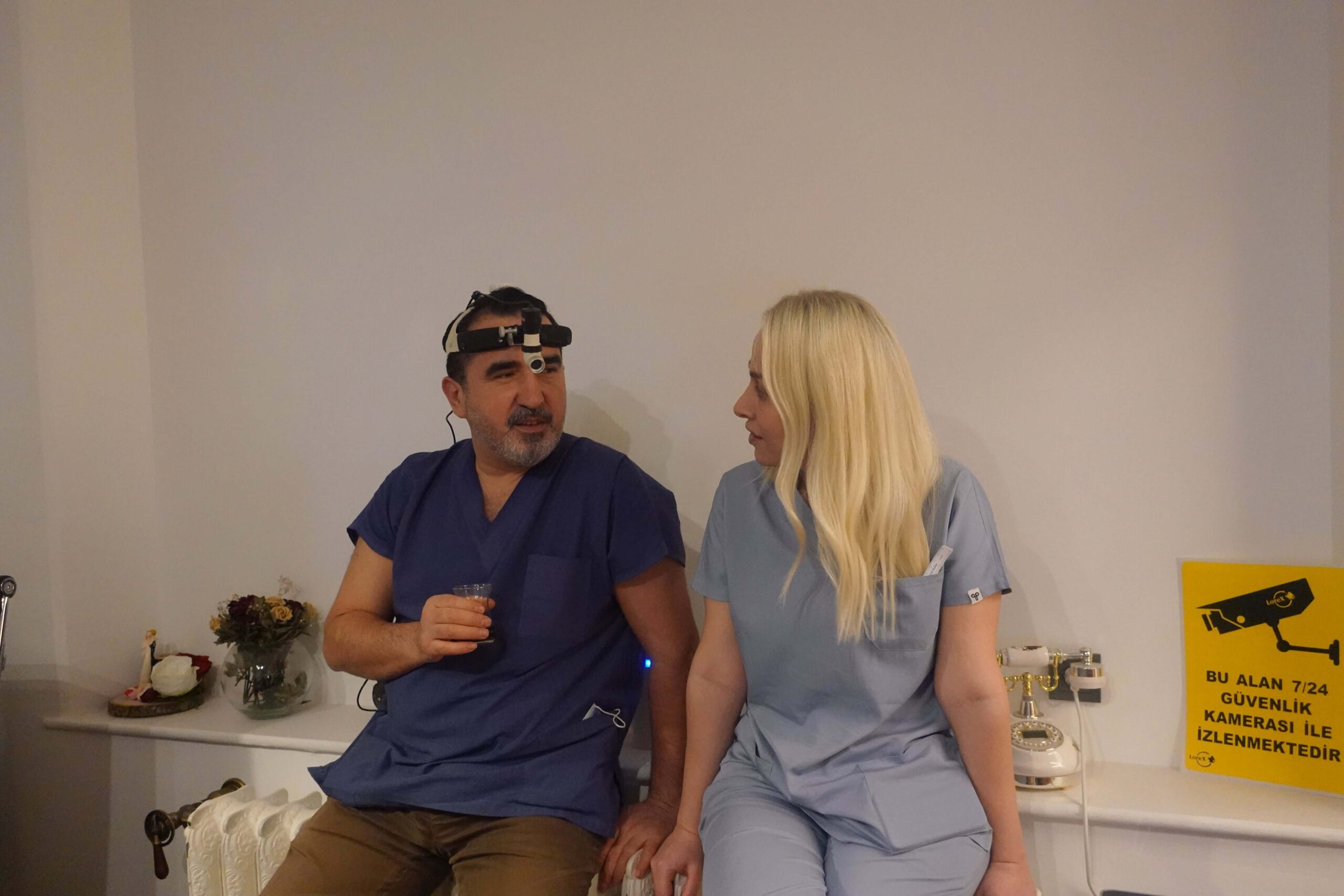
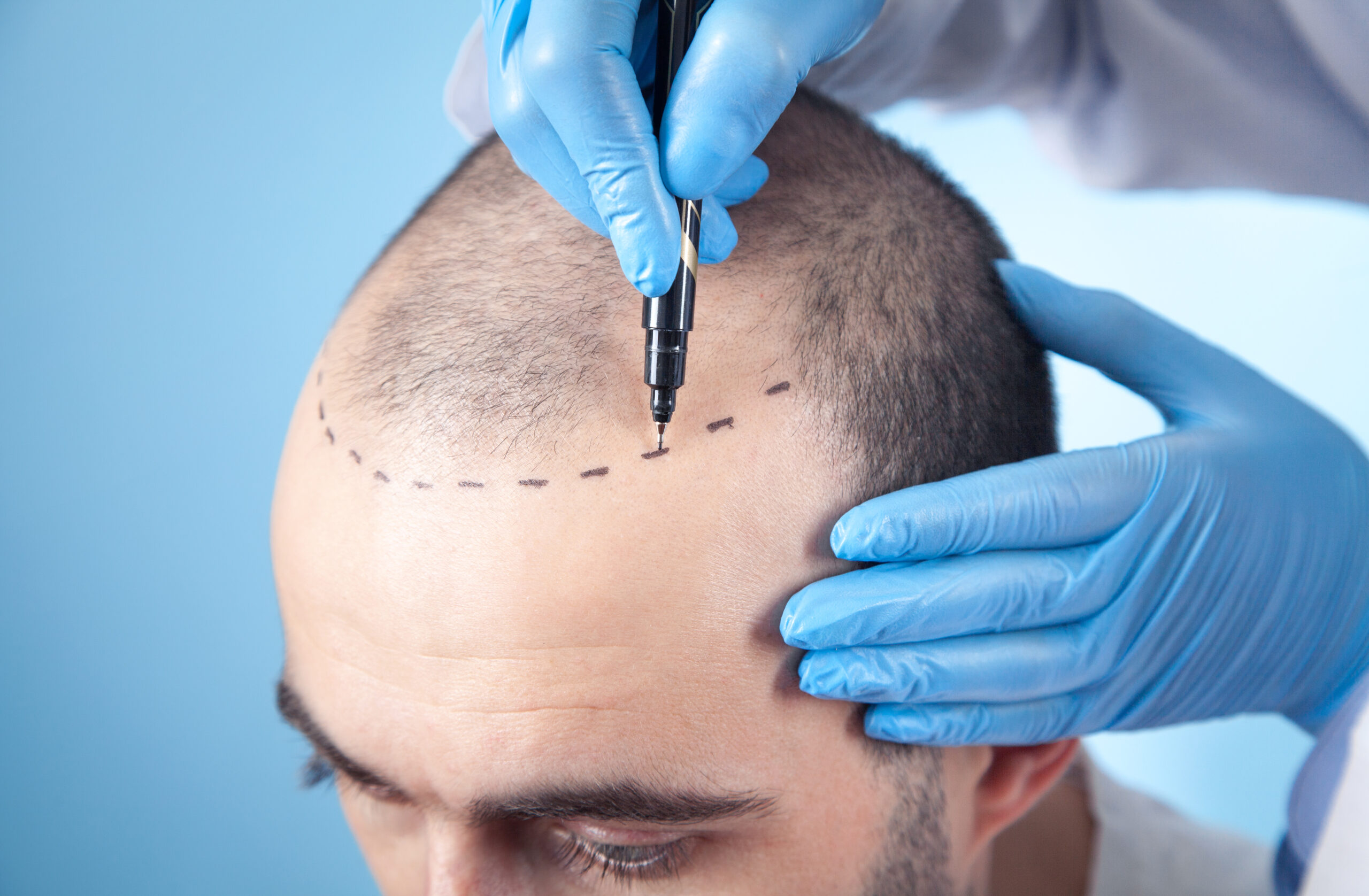
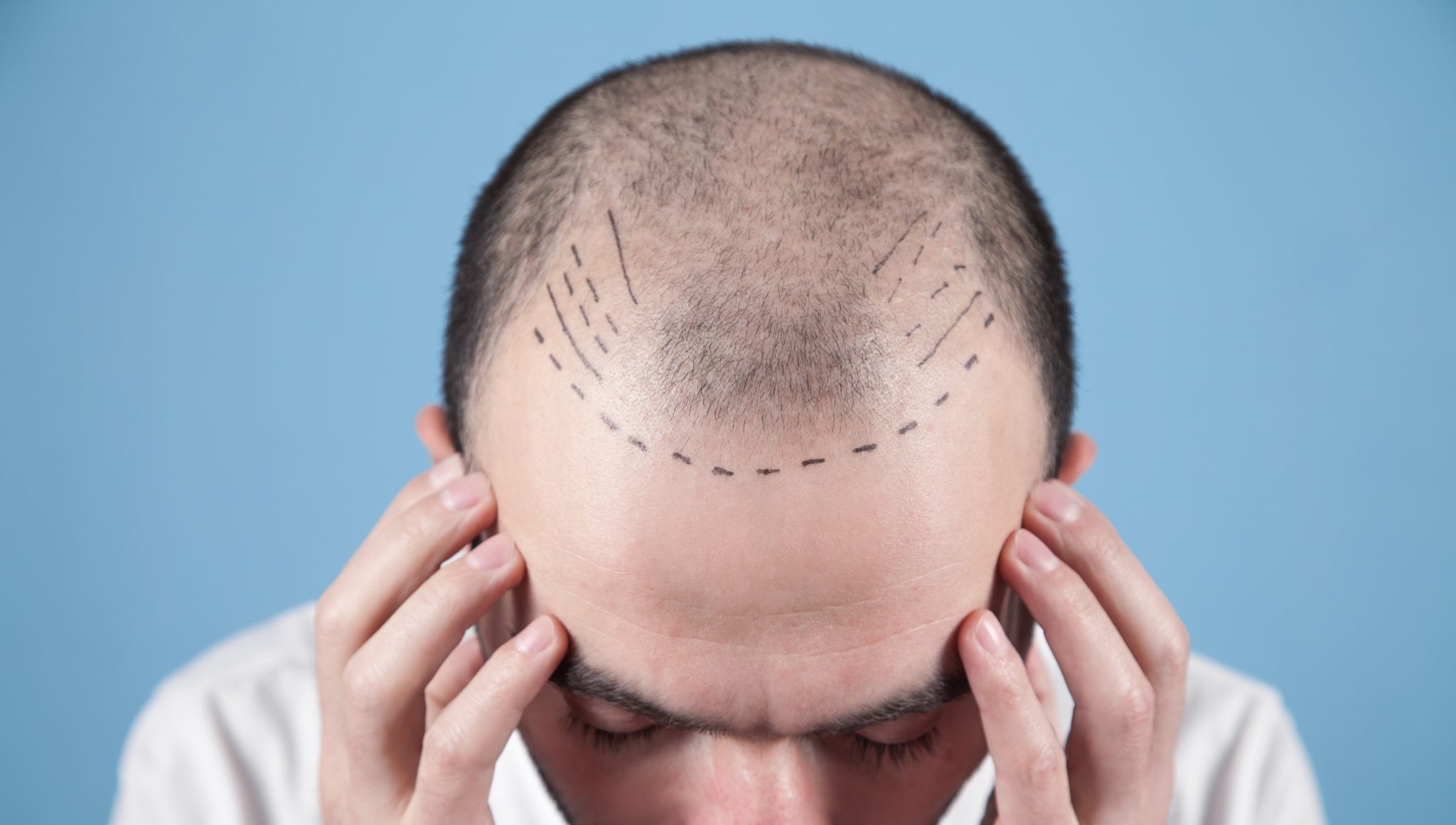
Soru Sor